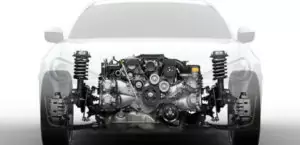The company assembled the 3.7-liter V6 Jeep EKG or PowerTech 3.7 engine from 2001 to 2012 and put it on mass pickup trucks and SUVs such as Durango, Nitro, Cherokee and Grand Cherokee. The power unit has become quite widespread on the market.
The PowerTech series also includes internal combustion engines: EVA, EVC and EVE.
The engine was installed on:
- Dodge Dakota 2 (DN) in 2002 – 2004;
- Dodge Dakota 3 (ND) in 2004 – 2011;
- Dodge Durango 2 (HB) in 2003 – 2008;
- Dodge Nitro 1 (KA) in 2006 – 2011;
- Dodge Ram 3 (DT) in 2001 – 2008;
- Dodge Ram 4 (DS) in 2008 – 2012;
- Jeep Cherokee 3 (KJ) in 2001 – 2007;
- Jeep Cherokee 4 (KK) in 2007 – 2012;
- Jeep Commander 1 (XK) in 2005 – 2010;
- Jeep Grand Cherokee 3 (WK) in 2004 – 2010;
- Mitsubishi Raider 1 (ND) in 2005 – 2009.
Specifications
| Production years | 2001-2012 |
| Displacement, cc | 3701 |
| Fuel system | injector |
| Power output, hp | 200 – 215 |
| Torque output, Nm | 305 – 320 |
| Cylinder block | cast iron V6 |
| Block head | aluminum 12v |
| Cylinder bore, mm | 93 |
| Piston stroke, mm | 90.8 |
| Compression ratio | 9.7 |
| Features | SOHC |
| Hydraulic lifters | yes |
| Timing drive | chain |
| Phase regulator | no |
| Turbocharging | no |
| Recommended engine oil | 5W-30 |
| Engine oil capacity, liter | 4.7 |
| Fuel type | petrol |
| Euro standards | EURO 3/4 |
| Fuel consumption, L/100 km (for Jeep Cherokee 2010) — city — highway — combined |
16.9 8.9 11.7 |
| Engine lifespan, km | ~300 000 |
Disadvantages of the EKG engine
- This engine has narrow oil channels and therefore it is better not to save on lubrication;
- The most common engine problem is sticking hydraulic lifters;
- Sometimes car owners with this engine experience falling valve seats;
- The three-chain timing chain runs about 200,000 km, and replacement is difficult and expensive;
- The rest of the complaints are related to electrical glitches and high fuel consumption.






